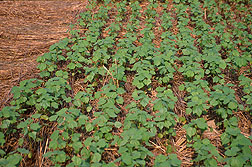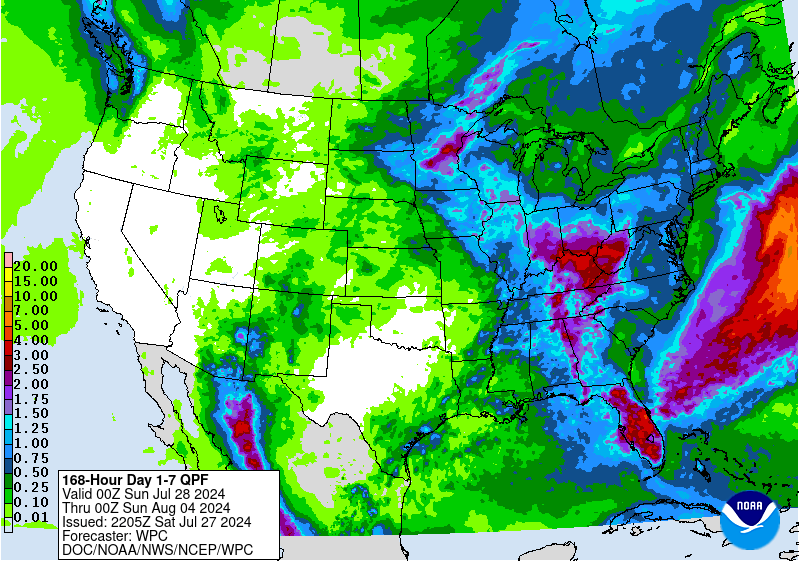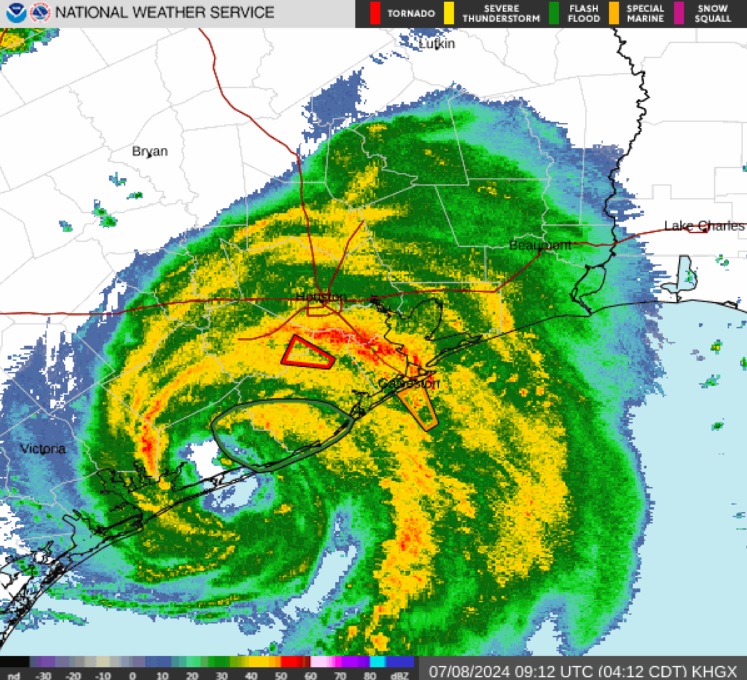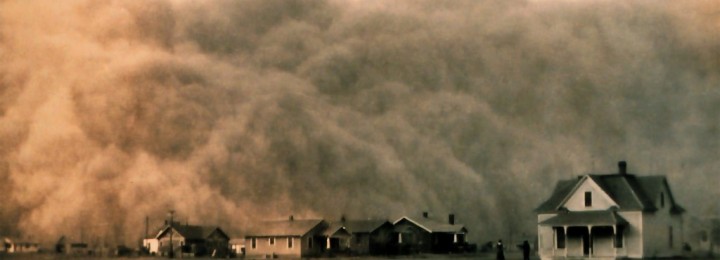-

This year’s growing season in south Georgia has been a mix of very wet and very dry conditions. The growing season started wet, which led to delays in planting in some fields. Then June was quite dry across most of the state, causing problems with pollination in dryland corn and impacts on other crops as…
-

The National Hurricane Center is showing an area with a 40% chance of development in the western Atlantic in a position that could mean potential trouble for us in the Southeast. Fortunately, this is quite a ways off, and many of the model solutions currently showing the storm as turning to the north before it…
Posted in: Tropical weather -

Since I went to see Twisters today, I thought for some summer fun you might enjoy Time magazine’s list of the best disaster movies, since many of these movies have a weather or climate component. I don’t agree with all of their rankings but it is fun to see what the rankings are. My own…
-

The latest 7-day QPF map shows that most of the region will get rain again this week and there is a chance of rain almost every day. The highest chances and rain amounts are likely to happen through Monday night but lower chances will continue through the week. This pattern is likely to stick around…
Posted in: Climate outlooks -

You might remember that Hurricane Beryl made landfall in Texas on July 8, bringing heavy rain, strong wind and damaging tornadoes to a wide swatch of the central US and into the Midwest and New England. One of the hardest hit places was Texas, not a surprise because it was the first place the storm…
-

Many one-day high temperature records were set in the 1930s in the United States. There is no doubt that there was very hot weather during that time in the central US, and a lot of that can be linked to land use changes caused by misuse of farmland as well as some shifts in ocean…
-

This week’s Drought Monitor, released this morning, shows widespread improvements in drought across the region with just a few small areas that were missed by rain and got deeper into drought. The Drought Monitor’s Change Map make it easy to see where the changes are. This does not even include the rain that fell since…
Posted in: Drought